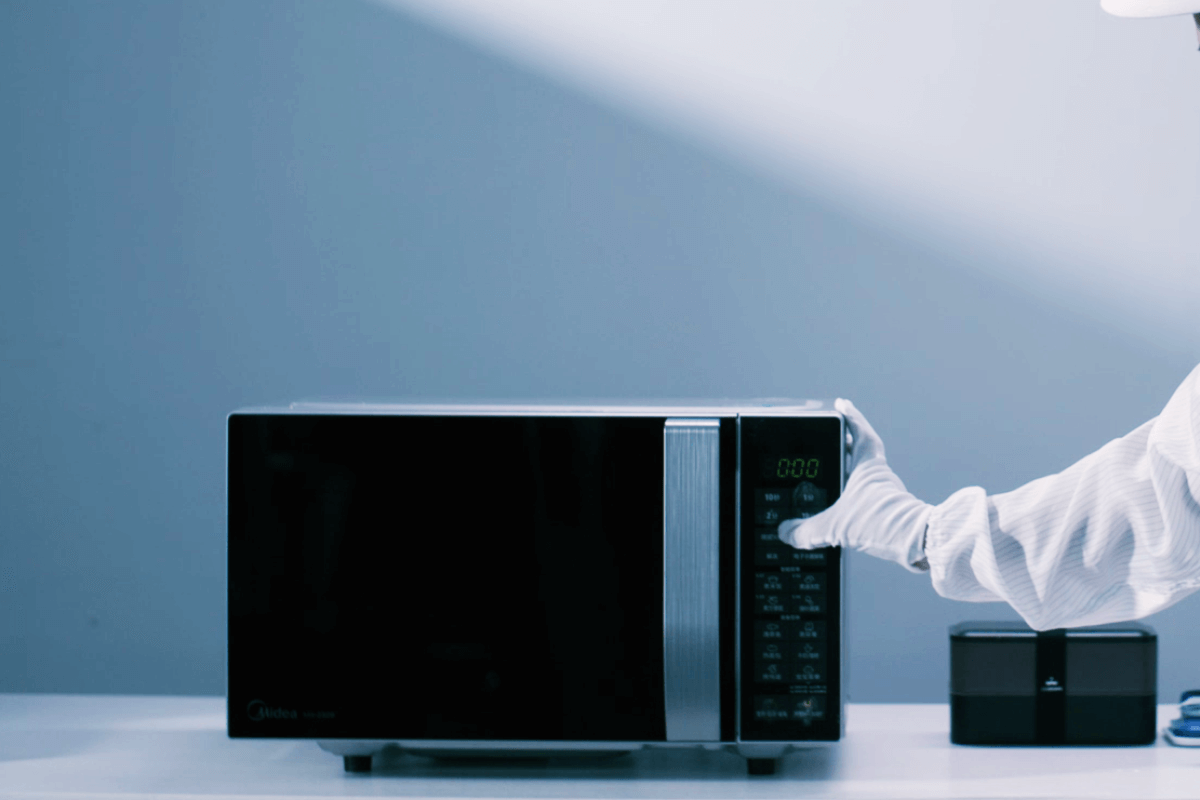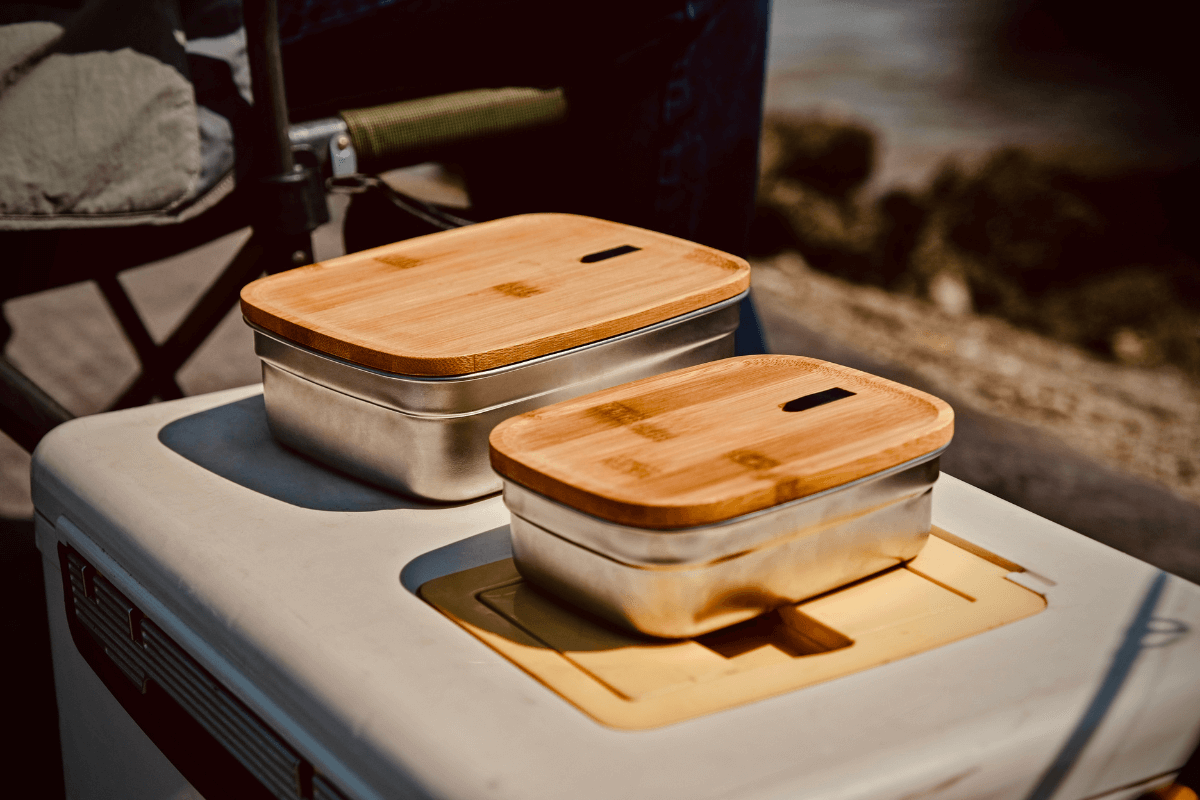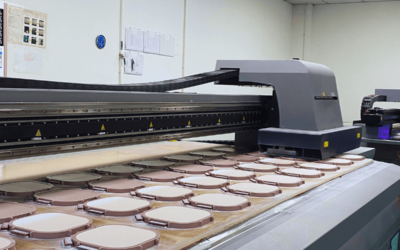What Material Of Bento Box Is Suitable For Microwave Heating?

Introduction
With the development of the times, bento boxes have become the choice of more and more people, especially those who like to make homemade meals and pursue environmental protection. Bento lunch boxes provide us with a lot of convenience and functionality, allowing us to enjoy delicious homemade meals anytime and anywhere.
Meanwhile, the microwave oven has become an indispensable kitchen tool in our daily lives, providing a quick and convenient way to heat up food. However, in order to ensure food safety and avoid potential health risks, it is crucial to choose lunchbox materials that are suitable for microwave heating.
The importance of choosing the right microwave heating material
When using a microwave oven, the material of the container plays an important role in how the food is heated. Certain materials can withstand the heat of microwaves and distribute it evenly, while there are materials that are not suitable for use in a microwave oven and may react adversely when exposed to microwave radiation. Choosing the right material not only ensures that our food is heated safely, but also that it is heated efficiently.
Article purpose: To provide information on materials suitable for microwave heating
The primary purpose of this article is to provide readers with guidance on selecting microwave-safe bento boxes that are suitable for microwave heating. It also provides comprehensive information on commonly used bento box manufacturing materials and their suitability for use in the microwave oven. By understanding the advantages and disadvantages of each material, the reader will be able to make an informed and appropriate decision in selecting a bento box that meets the requirements of microwave heating.
Learn about microwave heating
As the inseparable companion of the bento box, it is very important for us and our families to understand how the microwave oven works. In addition to understanding how different materials react differently to microwave radiation, you also need to know which materials can withstand microwave heating and conduct heat evenly. At the same time, it is also necessary to pay attention to the heat resistance and safety of materials, etc. to ensure the safety and health of food.
Explanation of the microwave heating principle
Microwave heating is a process that uses microwave radiation to heat food. Microwave radiation produced by a microwave oven is a high-frequency electromagnetic wave with a specific frequency and energy. When food is placed in a microwave oven and the heating process is activated, microwave radiation penetrates the food and interacts with the water molecules in the food.
The energy of the microwave radiation causes the water molecules to vibrate and rub rapidly, generating heat. This process quickly transfers heat to the food, heating it. Because water molecules are not evenly distributed in food and heating can be uneven, proper material selection is critical to the effectiveness of microwave heating.
Considerations when choosing a microwaveable bento box
Material Safety:Make sure the material you choose is microwave safe. Some plastic, glass and silicone materials are common choices, but not all materials are suitable for microwave heating. Check the information on the product packaging or label to make sure the bento box is marked “microwave safe” or “suitable for microwave heating”.
Thermal conductivity:Compared to stainless steel, plastic bento boxes have a lower heat transfer capacity. This means that when food is heated in a microwave oven, the food in a stainless steel bento box will heat up faster, but the box itself will also become very hot, posing certain safety risks. In contrast, plastic bento boxes have a lower heat transfer capacity, which means they do not overheat during the heating process, reducing the safety risk. In addition, plastic bento boxes have good heat retention properties. Therefore, when microwaving food, choosing a plastic bento box can better balance heating efficiency and safety.
Heat resistance:Make sure that the selected material can withstand the high temperature during microwave heating. Microwave heating heats food and containers, so bento box materials should be heat-resistant to prevent deformation, breakage, etc.
Summarize:By carefully evaluating these factors through the 3 points above, you can ensure that the bento box you purchase is suitable for microwave heating and will provide a convenient, safe, and efficient experience in daily use.
Common bento box materials
1.Plastic bento box
Pros
Affordable prices:Compared to other materials, plastic bento boxes are usually less expensive and economical.
Heat resistance:Has high heat resistance and can withstand the high temperatures generated by microwave heating. Able to safely heat food without breaking or deforming.
Lightness and portability:Plastic lunch boxes are usually lighter and easier to carry.
Durability:It can withstand extended use and frequent cleaning, making it one of the best choices for reliable recyclable containers.
Cons
Safety issues:Some cheap plastic bento boxes may contain chemicals that are harmful to human health, such as BPA (bisphenol A). These chemicals can leach from the plastic into the food, posing a potential health risk.
Summarize:Plastic bento boxes have obvious advantages in some aspects, such as heat resistance, light weight and durability. However, they also have some disadvantages, such as cheap products and unreliable brand safety issues. To ensure food safety and health, it is very important to choose food-grade plastic bento boxes with heat-resistant properties, and to use and clean them properly.
2.Glass bento box
Pros
Cons
Vulnerable:Compared to bento boxes made of other materials, glass bento boxes are more likely to break or shatter.
Overweight:Whether you’re carrying one or more glass lunch boxes, excess weight is often not a good thing (and it doesn’t apply to children either).
3.Stainless steel bento box
Pros
Cons
4.Wooden lunch box
Pros
Cons
Hygiene issues: The surface of wooden bento boxes is relatively less smooth than plastic, which can easily absorb food residue and may be more difficult to clean. If not properly cleaned and maintained, wooden bento boxes can breed bacteria or produce odors.
5.Silicone lunch box
Pros
Cons
Tips for using bento boxes for safe heating
General guidelines for using bento boxes in the microwave oven
1.Follow the manufacturer’s instructions: Different bento boxes may have specific instructions and restrictions for use. Always read and follow the manufacturer’s instructions and recommendations before using a microwaveable bento box.
2.Remove the lid or open the bento box: When heating bento boxes in a microwave oven, it is often necessary to remove the lid or open the seal of the box to allow steam to escape and avoid pressure build-up. This prevents heat buildup and possible spattering of food.
3.Distribute food evenly: Spreading food evenly in the bento box to avoid stacking or piling can help achieve more even heating.
Clean properly and stay safe
1.Cut off the power: Please make sure to unplug or cut off the power.
2.Pre-cleaning inspection: Before cleaning the bento box, make sure to carefully inspect the box for any cracks, deformation or damage. If any problems are found, stop using the bento box and replace it with a new one.
Safe handling of hot lunch boxes
1.Use heat-protective gloves or protection: When removing a hot bento box from the microwave oven, the surface may be very hot. Use heat-protective gloves or other protective devices to avoid burning your hands.
2.Avoid rapid opening: When removing the hot Bento Box, avoid opening the lid quickly or releasing steam. Let it sit for a moment to allow the heat to dissipate evenly, then open the lid slowly to prevent skin damage from hot steam.
3.Be careful with hot foods and liquids: Food and liquids in hot bento boxes can become very hot during the heating process. Handle hot food and liquids with care to avoid burns and accidental spills.
Related Posts
How To Pack Lunch For Work? 12 Tips for Packing Food with Ease
Busting your food budget? Want to bring lunch to work? Here are some of the most effective tips to help you figure out how to pack lunch for work. Do you know the secret to living a long and healthy life? It’s eating home-cooked meals! It's not only the key to a...
What Is UV Printing ? Know Its Process and Advantages
Thinking of using UV printing? Read on to learn about its working process, benefits, drawbacks, and more to determine whether it is the right one for you.UV printing is a revolutionary printing technology that has made commercial printing easy and faster. The durable,...
How To Successfully Develop and Produce Bento Boxes: From Idea To Market
Introduction Everyone around us is surrounded by carefully designed objects every day, including the bento boxes, lunch bags, cutlery, etc. that we use every day, all carefully designed by a person or team. From a creative idea to a commercial launch, this is what...








0 Comments